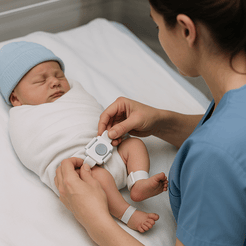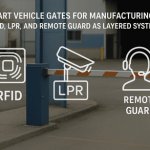
In a hospital, nothing is more important than protecting the most vulnerable patients—newborns. Families entrust hospitals not only with their child’s health but also with their safety from the moment of delivery until discharge. While infant abductions remain rare, the risk is real, and even one incident can have devastating consequences.
That’s why infant protection systems have become a standard security feature in labor and delivery units, neonatal intensive care units (NICUs), and pediatric care. But in 2025, these systems look much different than they did even five years ago. Advances in smarter tags, real-time alerts, and integrated hospital security systems are helping facilities safeguard infants with unprecedented speed and precision.
k
k
Why Infant Protection Matters More Than Ever
Hospitals face multiple risks when it comes to infant security:
-
Unauthorized removals by impersonators, family members, or strangers
-
Patient switching or misidentification errors
-
Unsupervised movement of newborns within or outside secure units
The stakes go beyond safety. Hospitals that lack effective infant protection systems risk regulatory scrutiny, HIPAA-related compliance issues, reputational damage, and loss of patient trust.
k
k
What’s New in Infant Protection Systems for 2025
1. Smarter, More Comfortable Tags
Gone are the bulky ankle monitors of the past. Today’s infant protection tags are:
-
Lightweight, skin-safe, and tamper-resistant
-
Built with longer battery life for continuous monitoring
-
Able to pair directly with the mother’s ID band for instant identity verification
These upgrades make the system both secure and family-friendly.
k
k
2. Faster, Real-Time Alerts
In the past, security alerts might lag or require manual confirmation. Now, advanced systems provide:
-
Instant notifications to staff mobile devices
-
Automatic door lockouts and elevator shutdowns if an infant nears an exit
-
Integration with video surveillance so cameras automatically track the event
This means faster response times and fewer opportunities for error.
k
k
3. Stronger Integration with Hospital Security Systems
Modern infant protection solutions don’t operate in isolation. They now connect seamlessly with:
-
Access control systems to restrict unauthorized entry and exit
-
Visitor management systems to flag unusual visitor activity in maternity units
-
HIPAA-compliant surveillance that records every incident for audit trails
-
Mass notification systems to instantly alert staff across departments
This interoperability ensures infant protection is part of a bigger, hospital-wide security strategy.
k
k
4. Smarter Analytics for Proactive Safety
Some systems now use AI analytics to identify unusual patterns—like repeated visitor attempts or unauthorized staff badge use near sensitive areas. This proactive approach allows hospitals to intervene before an incident escalates.
j
j
Benefits of Modern Infant Protection Systems
| Benefit | Why It Matters |
|---|---|
| Patient & Family Trust | Families feel reassured knowing their baby is protected around the clock. |
| Regulatory Compliance | Supports Joint Commission audits and HIPAA safeguards. |
| Staff Efficiency | Automated alerts reduce manual checks and free up nursing staff. |
| Incident Readiness | Real-time data and video integration streamline emergency response. |
| Hospital Reputation | A strong security posture builds confidence in your facility. |
k
k
Real-World Example: Prevention in Action
A maternity unit in the Midwest recently upgraded to a new RFID-based infant protection system. Within weeks, the system detected a tampered tag at an exit door. The automatic lockdown triggered, cameras zeroed in on the area, and staff responded immediately. The incident turned out to be accidental, but it demonstrated how layered safeguards prevent risks before they become tragedies.
k
k
How to Choose the Right System in 2025
When evaluating infant protection systems, hospital administrators should ask:
-
Does the system integrate with access control and surveillance?
-
Are the tags comfortable, tamper-proof, and mother-paired?
-
Does it provide real-time mobile alerts and lockdown automation?
-
Can it generate detailed audit trails for compliance purposes?
-
Is it scalable across multiple facilities if needed?
The right choice balances security, compliance, and patient experience.
k
k
Conclusion
Infant protection systems in 2025 are smarter, faster, and more reliable than ever before. By combining tamper-proof tags, real-time alerts, and seamless integration with hospital security systems, healthcare facilities can protect newborns, reassure families, and strengthen compliance.
Protecting infants isn’t just about technology—it’s about trust, safety, and peace of mind.
Talk to SSP about designing an infant protection system that integrates seamlessly with your hospital’s security strategy.


